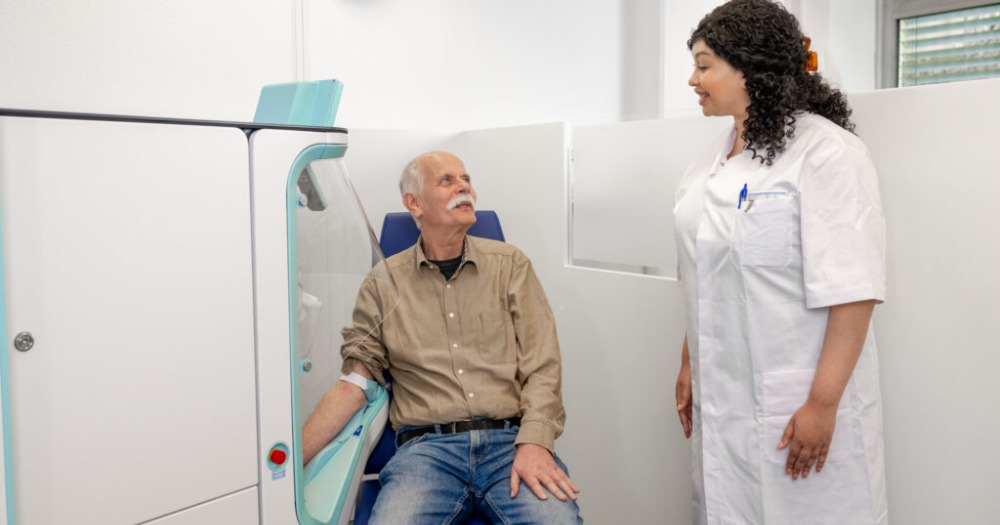This device enables autonomous blood drawing

The Netherlands-based medical robotics company Vitestro has launched an A.D.O.P.T. (Autonomous Blood Drawing Optimization and Performance Testing) trial for its autonomous blood drawing device. The goal is to reach 10,000 patients and obtain CE marking by the end of 2024 to enable autonomous venipuncture with patients.
The first 350 patients have currently been enrolled in the trial at the study site Result Laboratorium in the Albert Schweitzer Hospital. Other investigational partners are St. Antonius, OLVG Lab and Amsterdam UMC.
How does it work?
Vitesto's device combines AI-based, ultrasound-guided 3D reconstruction with the robotic insertion of a needle, ensuring accurate, consistent venipuncture. The procedure is performed fully automatically, from tourniquet to bandage application.
A prototype has previously been tested with 1,500 patients.
Why does it matter?
This innovation in phlebotomy will complement the conventional method of collecting blood samples manually. Implemented devices are intended to compensate for the shortage of personnel, making it easier to organize the busy Outpatient Blood Draw Clinic. Given the mounting shortages of healthcare personnel, there is a clear need for a future-proof system to guarantee continuity of care.
Vitestro's autonomous blood drawing device contributes to safe, consistent blood collection for patients, and to solving the increasing shortage of healthcare personnel. Upon obtaining CE marking, the technology is expected to be ready to use for patient care in hospitals and laboratories by the end of 2024.
On the record
"The A.D.O.P.T. trial is a two-year study. Our objective is to test and continue developing Vitestro's autonomous venipuncture device and achieve performance and safety results required for regulatory approval," said Toon Overbeeke, Co-founder and CEO at Vitestro.
"Both patients and phlebotomists are very excited about this particular innovation. The A.D.O.P.T. trial heralds a new phase in which we prepare for implementation in routine clinical practice," added Michael Fouraux, Principal Investigator at Result Laboratorium. "In recent years, hundreds of patients at this location have already participated in various tests with the blood collection device."
💡Did you know?
You can take your DHArab experience to the next level with our Premium Membership.👉 Click here to learn more
🛠️Featured tool
 Easy-Peasy
Easy-Peasy
An all-in-one AI tool offering the ability to build no-code AI Bots, create articles & social media posts, convert text into natural speech in 40+ languages, create and edit images, generate videos, and more.
👉 Click here to learn more


